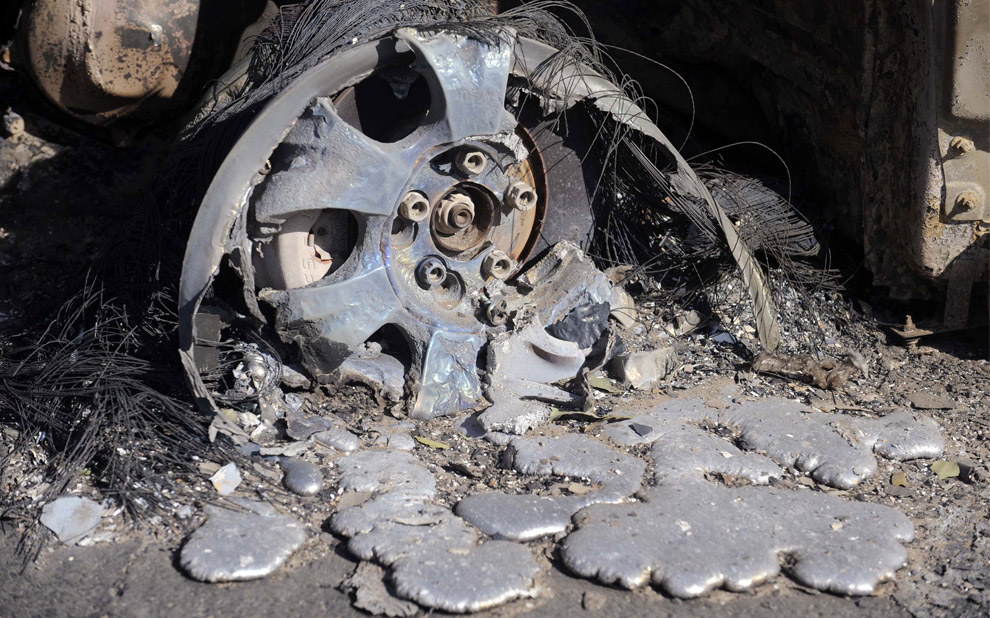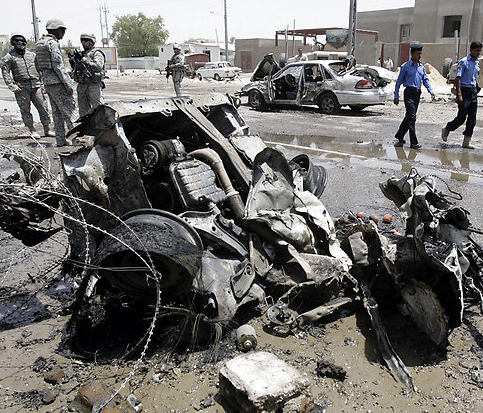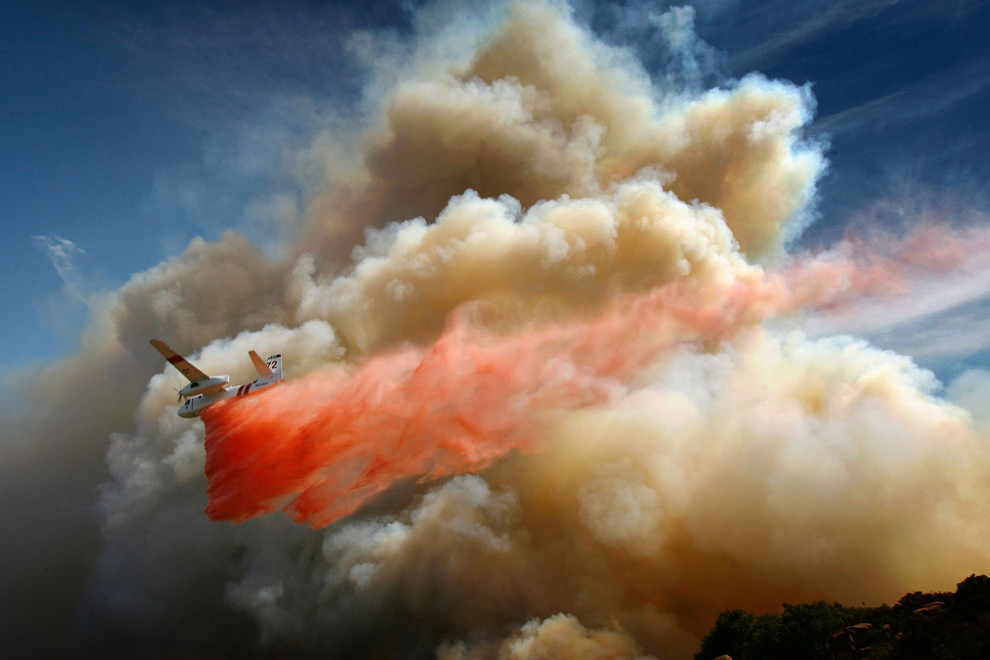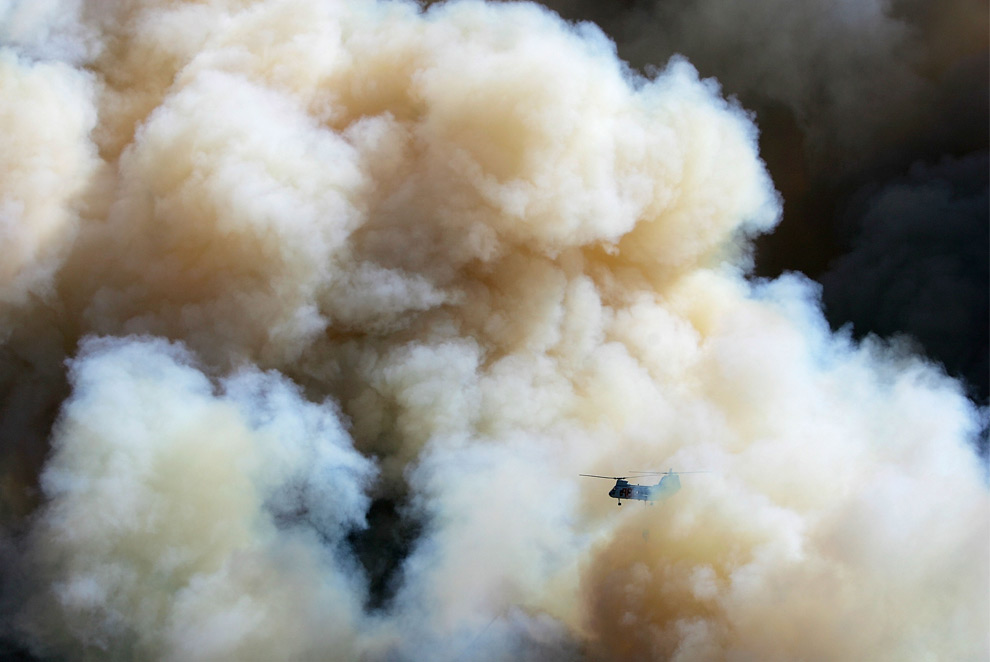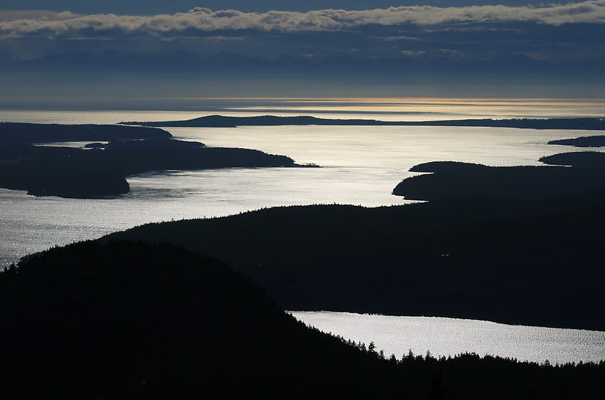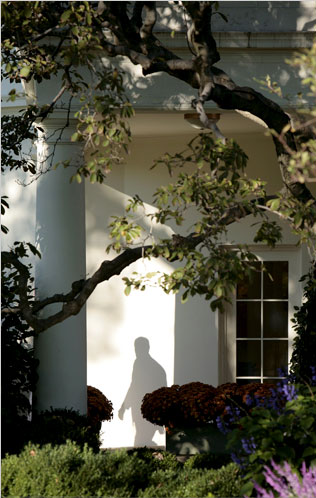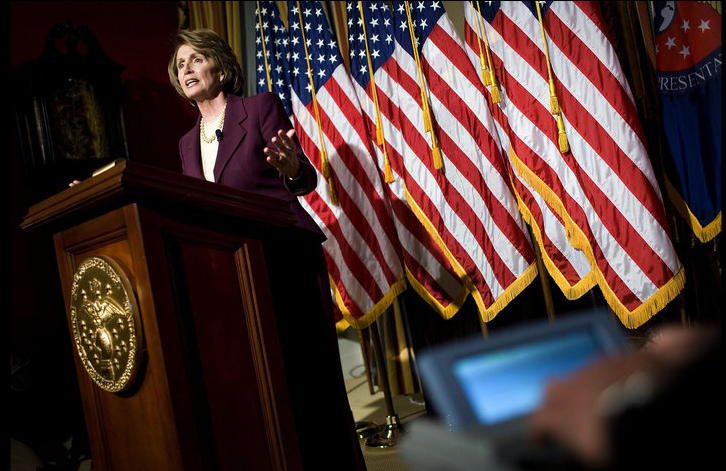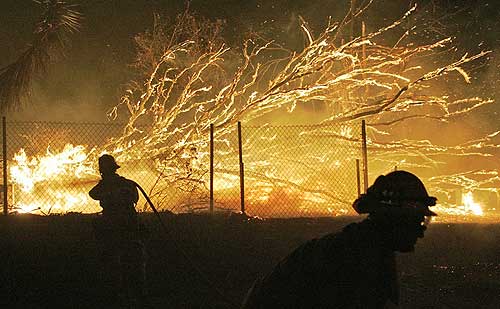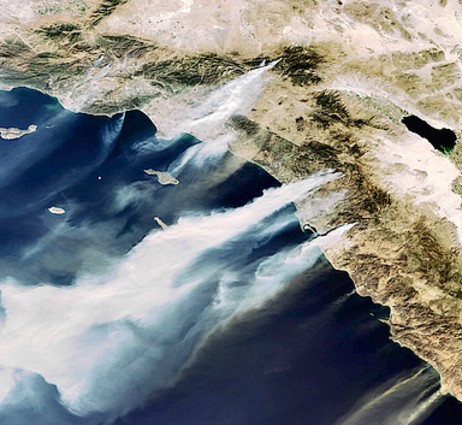Several months ago in a post entitled Shades of Gray, I suggested that the use of gray tones in photojournalism could make a subject appear otherworldly. Thus, the photograph could alternately buffer the viewer from the those being depicted or reveal an inability to reach across the gulf between different cultures. Even if I got that right, there is more to be said about seeing gray. For one example, take a look at this photo:
The wildfires burning around Los Angeles this week were so hot that they could melt steel. Here a wheel rim has puddled into globs of dull metal. It’s as if the vehicle were being smelted back to its original elements, reversing the long process of civilization that turned iron ore into a truck. The fire might have been started by a match stick–or, more likely, a random lightening strike, one among thousands that happen in the area every year–yet it can become a raging inferno capable of devouring cities. In the aftermath, green shoots will appear amidst blackened devastation and the great cycle of life will continue. But nothing there will put that wheel rim back together. Nature, it seems, is no respecter of machines.
The image is a color photo, of course, and that makes the point all the more poignant. The gray metal isn’t an artifact of the photographic process. Instead, a color print reveals how gray has flowed into view. What had been hidden behind chrome has been released into the environment like lead or some other industrial toxin ready to leach further into the landscape. What had been crafted to help a society hum along now is neither artifact nor nature but that third thing: waste.
Like this:
Again, a color photo reveals a world turning gray. It actually took a moment for the colored shirts on the Iraqi police officers to assert themselves into my focal vision, rather than merely providing a felt and uneasy sense of contrast. The wreckage from a car bomb dominates the foreground of the picture and is reinforced by the second smashed vehicle in the center rear. The scene as a whole is tonally consistent with these gray/white wrecks. But for one taillight and other minor reddish hints, this is a world of grays, greens, and other dull surfaces. Whether war zone or concrete yard, it’s a world being given over to gray. No wonder the police seem out of place: colorful, nonchalant, they imply domestic peace and all the life that can be a part of that. They are balanced and then some by the soldiers opposite them, who seem more of a permanent fixture. By contrast, the police are just passing through.
People like to think that wars, like fires, are accidents; and that fires, like wars, could not have been prevented. In reality, the California conflagrations are predictable outcomes of poorly regulated housing development. And the war in Iraq–well, we know that story, and it was no accident. The truth is that for all the art and energy that goes into building up modern societies, they also carry within themselves powerful forces that are continually turning people, places, and things into waste. Alongside familiar scenes of peace, prosperity, and color, another world is also under construction: Gray world, inert yet dangerous, making waste seem like second nature.
Photographs by Phil McCarten/Reuters (thanks to The Big Picture) and Karim Kadim/Associated Press. Note that because NCN doesn’t have a style sheet or a copy editor to keep my erratic spelling in check, I use both “gray” and “grey”; something I learned, somewhat to my embarrassment, when I searched for the Shades of Gray post and turned up more entries under “grey” than “gray.” Both terms are correct, but consistency would still be a virtue were it to be found here. For that, readers will have to look elsewhere.
